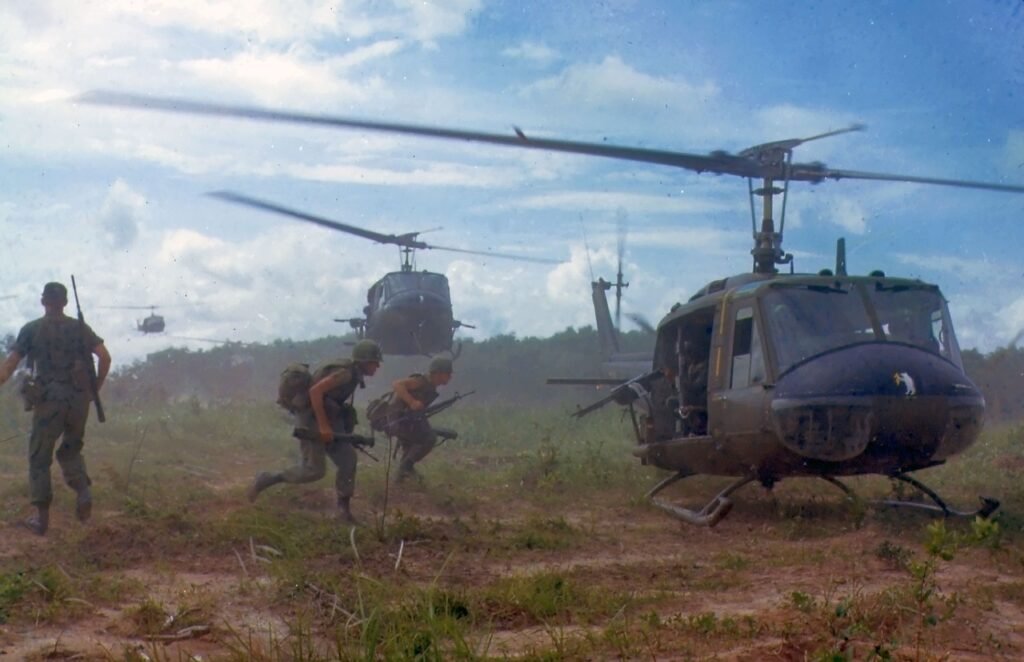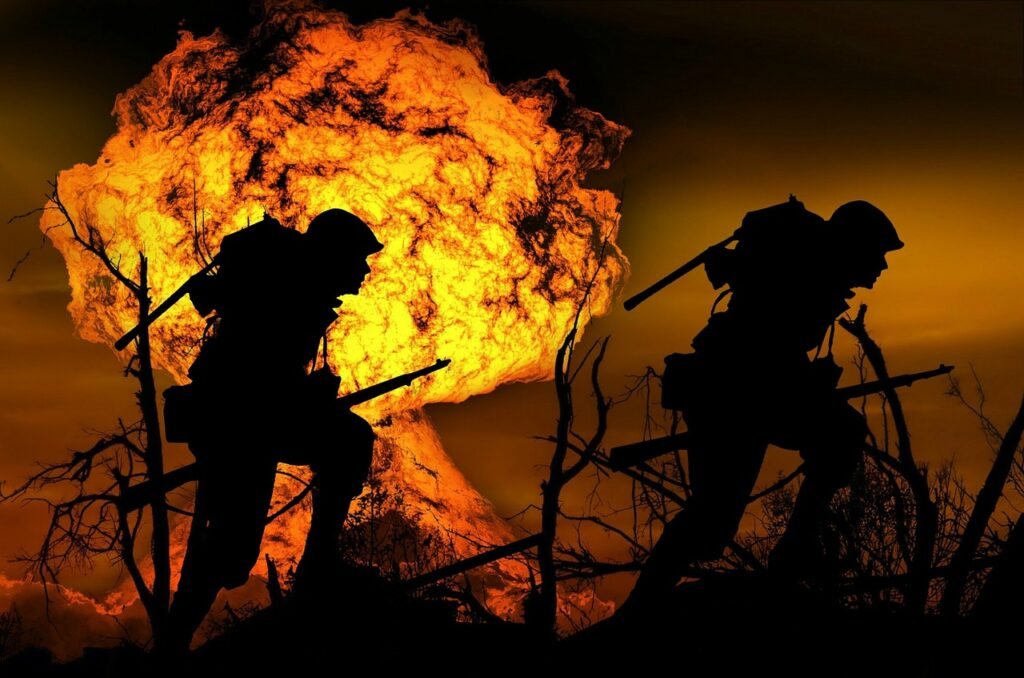The Vietnam War, a conflict that spanned nearly two decades, stands as one of the most controversial and consequential chapters in modern history. For the United States, it was a war that left scars both domestically and internationally, reshaping geopolitical dynamics and challenging the nation’s self-image as a global superpower. Yet, despite its vast resources and military might, the USA found itself mired in a quagmire that would ultimately end in defeat.
In this exploration, we delve into the complexities of the USA’s involvement in the Vietnam War, unraveling the blunders that led to its ultimate failure.
Understanding The Context
To comprehend the USA’s missteps in Vietnam, one must first understand the historical context that preceded its direct involvement. The roots of the conflict can be traced back to the mid-20th century when Vietnam, a former French colony, embarked on a quest for independence.
The First Indochina War (1946-1954) saw Vietnamese nationalists, led by Ho Chi Minh and the Viet Minh, wage a protracted struggle against French colonial rule. The conflict culminated in the decisive Battle of Dien Bien Phu, where the Viet Minh emerged victorious, prompting the 1954 Geneva Accords, which divided Vietnam into two separate states: the communist-led North Vietnam and the US-backed South Vietnam

the rise of US involvement in vietnam war
Initially, the USA’s involvement in Vietnam was limited to financial and advisory support for the South Vietnamese government. However, as the Cold War intensified and fears of communist expansion grew, the USA gradually escalated its military presence. The Gulf of Tonkin incident in 1964, where North Vietnamese forces allegedly attacked American ships, provided the pretext for a significant escalation, marked by the passage of the Gulf of Tonkin Resolution, which granted President Lyndon B. Johnson broad authority to wage war in Vietnam.
The USA’s military intervention in Vietnam was characterized by a combination of conventional warfare, aerial bombardment, and counterinsurgency tactics. Operation Rolling Thunder, a sustained bombing campaign against North Vietnam, aimed to cripple its infrastructure and undermine its war effort. Meanwhile, the USA deployed hundreds of thousands of troops to support the South Vietnamese army in its fight against the Viet Cong guerrillas and the North Vietnamese Army (NVA).
.
Blunders in Strategy and Tactics
Despite its overwhelming military superiority, the USA’s approach to the Vietnam War was marred by a series of strategic and tactical blunders. One of the most glaring mistakes was the failure to understand the nature of the conflict itself. Rather than recognizing it as a nationalist struggle for reunification, US policymakers viewed it through the lens of the Cold War, framing it as a proxy battle against communist expansion. This narrow perspective led to a misguided belief in the “domino theory,” which posited that the fall of Vietnam to communism would trigger a chain reaction of similar revolutions across Southeast Asia.
The USA’s reliance on conventional military tactics also proved to be ill-suited to the realities of guerrilla warfare. The Viet Cong, operating in small, decentralized units, employed hit-and-run tactics and exploited the dense jungle terrain to their advantage. Despite pouring vast resources into bombing campaigns and large-scale ground offensives, the USA struggled to gain a decisive advantage over their elusive enemy.
Furthermore, the USA’s strategy of attrition, aimed at wearing down the enemy through sheer force, proved to be both ineffective and morally dubious. The widespread use of defoliants like Agent Orange and the bombing of civilian targets raised international outcry and fueled anti-war sentiment both at home and abroad. The Tet Offensive of 1968, in which the Viet Cong launched a coordinated assault across South Vietnam, exposed the limitations of US military strategy and shattered the illusion of American invincibility.
Political Miscalculations and Public Backlash
In addition to its military missteps, the USA’s involvement in Vietnam was plagued by political miscalculations and a growing domestic backlash. The war became increasingly unpopular among the American public, with widespread protests and demonstrations erupting across the country. The draft, which conscripted young men to fight in Vietnam, further inflamed tensions and fueled opposition to the war effort.
President Johnson, grappling with mounting casualties and a deteriorating situation on the ground, faced a dilemma: escalate the war further or seek a negotiated settlement. Despite initial optimism about the prospects of victory, it became clear that a military solution was elusive. The USA’s inability to decisively defeat the Viet Cong or compel North Vietnam to capitulate highlighted the futility of its intervention.
The Nixon Administration, which inherited the Vietnam War in 1969, pursued a policy of “Vietnamization,” aimed at gradually transferring responsibility for the war to the South Vietnamese government while withdrawing US troops. The Paris Peace Accords of 1973 provided a framework for the withdrawal of American forces and the release of prisoners of war, but failed to achieve a lasting peace settlement. The fall of Saigon to North Vietnamese forces in 1975 marked the ignominious end of the USA’s involvement in Vietnam, leaving behind a legacy of shattered dreams and broken promises.
Paris Peace Accord 1973
The Paris Peace Accords of 1973 marked a crucial moment in the Vietnam War, representing an attempt to negotiate a resolution to the conflict. Signed on January 27, 1973, by the United States, North Vietnam, South Vietnam, and the Viet Cong, the accords aimed to establish a ceasefire and pave the way for a political settlement. Under the agreement, the United States committed to withdrawing its troops from Vietnam, effectively ending direct American military involvement in the conflict. Additionally, the accords called for the release of prisoners of war and outlined provisions for the peaceful reunification of Vietnam through political means.
However, the peace achieved through the Paris Peace Accords was short-lived. Despite the ceasefire, fighting continued between North and South Vietnam, as well as clashes between South Vietnamese forces and the Viet Cong. The accords failed to bring about a lasting political solution, and in 1975, North Vietnamese forces launched a successful offensive, leading to the fall of Saigon and the reunification of Vietnam under communist rule. While the Paris Peace Accords temporarily halted direct U.S. involvement in the war, they ultimately did not prevent the victory of the communist forces and the end of the conflict.
conclusion
The Vietnam War stands as a sobering reminder of the perils of military intervention and the hubris of great powers. The USA’s blunders in Vietnam, driven by a combination of ideological zeal, strategic miscalculations, and a failure to understand the dynamics of the conflict, resulted in a protracted and costly war that ultimately ended in defeat. The human toll of the war was staggering, with millions of lives lost and entire communities torn apart.
Yet, amidst the tragedy and turmoil, the Vietnam War also sparked a moment of reckoning for the USA, forcing it to confront the limits of its power and the moral complexities of war. The scars of Vietnam continue to reverberate to this day, shaping America’s approach to foreign policy and its understanding of its role in the world. As we reflect on the lessons of the past, may we strive to build a future where diplomacy triumphs over conflict and where the horrors of war are consigned to history.
questions and answers
- What year did the Vietnam War begin?
- Answer: The Vietnam War officially began in 1955, although the conflict had its roots in the French colonization of Vietnam in the mid-19th century.
- Which two sides were involved in the Vietnam War?
- Answer: The Vietnam War primarily involved North Vietnam, supported by the Viet Cong guerrilla fighters, against South Vietnam, supported by the United States and its allies.
- What was the main reason behind the United States’ involvement in the Vietnam War?
- Answer: The United States became involved in the Vietnam War to prevent the spread of communism in Southeast Asia, following the policy of containment outlined in the domino theory.
- Which event is often considered the turning point in American public opinion regarding the Vietnam War?
- Answer: The Tet Offensive in 1968 is widely regarded as the turning point in American public opinion. Despite significant losses, North Vietnamese and Viet Cong forces demonstrated their resilience, challenging the belief that the war was being won by the United States.
- What was the significance of the Gulf of Tonkin Resolution?
- Answer: The Gulf of Tonkin Resolution, passed in 1964, authorized the President of the United States to take military action in Vietnam without a formal declaration of war from Congress. It significantly escalated U.S. involvement in the conflict.
- Who was the President of the United States during much of the Vietnam War?
- Answer: Lyndon B. Johnson was the President of the United States during much of the Vietnam War. He succeeded John F. Kennedy after his assassination in 1963 and served until 1969.
- What was the outcome of the Paris Peace Accords in 1973?
- Answer: The Paris Peace Accords signed in 1973 marked the official end of U.S. involvement in the Vietnam War. It called for a ceasefire, the withdrawal of U.S. troops, and the release of prisoners of war.
- Which event led to the fall of Saigon and the reunification of Vietnam under communist rule?
- Answer: The fall of Saigon occurred on April 30, 1975, when North Vietnamese forces captured the South Vietnamese capital. This event led to the reunification of Vietnam under communist rule.
- Approximately how many Vietnamese civilians and soldiers, as well as U.S. military personnel, lost their lives during the Vietnam War?
- Answer: Estimates vary, but it is believed that over 2 million Vietnamese civilians and soldiers, as well as approximately 58,000 U.S. military personnel, lost their lives during the Vietnam War.
- What impact did the Vietnam War have on American society and politics?
- Answer: The Vietnam War deeply divided American society and sparked widespread protests against U.S. involvement. It led to significant changes in U.S. foreign policy, increased skepticism of government actions, and a reassessment of military strategies. The war also prompted reforms in the U.S. military and contributed to the emergence of the anti-war movement as a powerful force in American politics.

